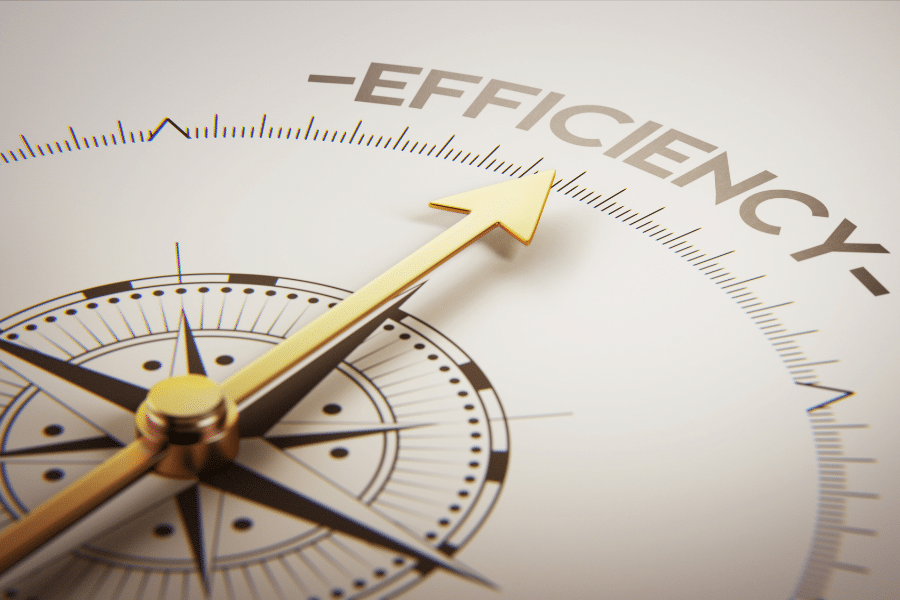Introduction: The Principles of Lean
Lean principles are timeless principles that can be used in any organization and any industry. They focus on the employee’s work experience, and they provide a framework to achieve continuous improvement. With this problem solving and continuous improvement skills, it is a sought out skill in the workplace.
Japanese engineer Taiichi Ohno introduced lean principles in the early 1900s. Since then, the principles have been applied to many industries and organizations with success stories reported worldwide.
After World War II, Toyota Motor Company became one of the first companies to adopt the Lean philosophy for their manufacturing processes. By doing so, they could reduce inventory by more than 85% and lower their costs by 60% while achieving increased quality levels of their products.
Lean Principle Mindset Theory Explained
The lean principle of problem solving is an easy-to-follow model that helps to improve the efficiency of any company or business. Specifically, it’s about continuous improvement, and it starts with identifying the problems and then solutions to them by implementing lean principles like value stream mapping, value analysis, error proofing, etc.
The lean principle of problem solving has its roots in Toyota’s production system, recognized as one of the most successful production systems in history.
Benefits of Lean Principle at the Workplace
The Lean Principle is based on the idea that there is no need for excess or waste, and that any steps that do not add value should be eliminated.
Although it was started in the manufacturing industry, the Lean Principle have been implemented into many different types of organizations. They have been used in healthcare, government agencies, and business to reduce costs and increase customer satisfaction.
Lean Principle have helped to create a more efficient workforce by eliminating wasted time while also improving products or services while still maintaining high standards of quality.

5 Ways to Develop a Lean Principle Mindset
Lean principle is a methodology used in the manufacturing industry to reduce waste and create value. The lean principle is essentially an idea that emphasizes both problem solving and continuous improvement.
There are five ways to develop a lean principle mindset in business:
1. Let go of perfection, or when that doesn’t happen, at least understand the reality. In any given process, there will be imperfections. In fact, some processes are not perfect; they are simply good enough. Lean principles are all about recognizing this reality. If you try to get everything right, you will fail. That’s just how it is. Instead, focus on being as close to perfect as possible, while at the same time creating value. Get out of the way: The most valuable people in your organization are those who are helping you create value.
2. Understand that there are no perfect solutions to problems, only temporary fixes. The first step towards developing a lean principle mindset is to understand that there are no perfect solutions to problems and that the best solution is often the simplest one. This is why lean principles are so powerful in business; they encourage continuous improvement, which is at the heart of lean principles.
3. Focus on the process rather than the outcome; avoid creating “what if” scenarios. “If only we had more time or money, we could solve this problem.” This is a classic case of “analysis paralysis.” Instead, focus on how you can make your current process more efficient or effective. You can also think about what you can do to improve the process. By focusing on the process, you eliminate “what if” scenarios.
4. Create small experiments; keep them small, manageable, and cheap enough to run again if they fail. The most important thing is to try and keep your experiments small and manageable. Make sure you do not waste too much time on any one project, and do not try to do too many things at once. Run small experiments to see how your current production system works. By running small experiments, you are able to quickly repeat them if the first round doesn’t work.
5. Do not wait for problems before solving them; instead, proactively identify potential issues before they arise. Be proactive and not reactive. Be prepared to do more than just react to problems. Rather, be proactive about how you plan to handle future issues or problems. Think about what could happen if you don’t address a problem. You may not be able to eliminate the problem, but you will be able to manage the negative effects of the problem. The only way to avoid problems is to make sure that you don’t have any.
3 Tools for Developing a Lean Principle Mindset
Lean principles are the pillars of lean thinking. They act as guiding principles that allow us to make decisions systematically and avoid waste.
In this article, we will explore three tools that can help you develop a lean principle mindset:
- The 5 Whys – 5 Whys is a tool used by Toyota to develop the problem-solving process. The objective is to find the root cause of a problem and fix it.
- Lean Culture Survey – This tool will help you identify some of your current strengths and weaknesses in your company’s lean culture. By doing this survey, you can also get a snapshot of where you stand to create a sustainable, low-waste culture.
- Continuous Improvement Survey – This survey will help identify areas for improvement within your organization. This is effective when the survey is shared to the employees to be filled because they would be able to share insights on the areas for improvement.
Conclusion
Lean culture is difficult to explain without providing examples or case studies, but it can be illustrated with the following statement: “Quality means getting rid of waste.”



